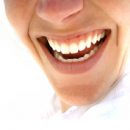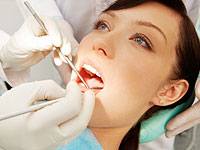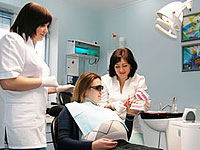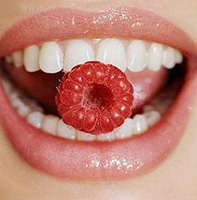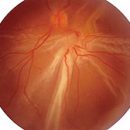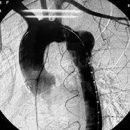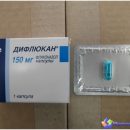In the article, analyze the classification of the pulpitis, we are talking about the treatment of chronic and pulpitis of dairy teeth. We note that the pulpit after high-quality treatment with the use of modern technologies and drugs does not affect the state of the dental system.
Content
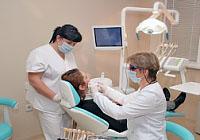 The classification of the pulpitis represents two global partitions: acute and chronic form of manifestation of the disease. The acute pulpit occurs when the infection in the pulp is penetrating with a hermetic pulp chamber and has options:
The classification of the pulpitis represents two global partitions: acute and chronic form of manifestation of the disease. The acute pulpit occurs when the infection in the pulp is penetrating with a hermetic pulp chamber and has options:
- hyperemia pulp;
- serous limited;
- serous diffuse;
- purulent;
- traumatic.
When choosing a method for treating chronic pulpitis, rely on the following forms of the disease:
- Fibrous — There is an arrangement of connective tissue, the asymptomatic current is noted, weak unpleasant sensations are possible;
- Hypertrophic or proliferative form is characterized by the presence in the carious region of a fibrous polyp with excess prolipation of pulp tissue through a damaged carious cavity;
- The gangrenous or purulent form proceeds with serious painful sensations in view of the tissue decay of the tissue and the detection of granulation tissue in the root pulp, with a pronounced sensitivity to hot.
Classification of various forms of pulpitis involves mechanical and drug treatment of root channels — Removal of nerve or depug and sealing. Without adequate treatment of dental channels, chronic pulpit can go to periodontitis with various multiple complications. Their development contributes to the ungreetic closure of the channel, as well as inadequate quality seals, tabs, lining and crowns.
Pulpitis of temporary dairy teeth: prevention costs
Inflammation of the pulp of dairy teeth — The phenomenon is quite frequent, complicated by the fact that the child can not always help the doctor in the diagnosis of the disease, with difficulty describing its condition and indicating the localization of pain, which for the pulpita of dairy teeth is quite natural. The clinical manifestations of the disease in each kid have their own characteristic features, which depends on the age and characteristics of the structure of solid tissues and pulp.
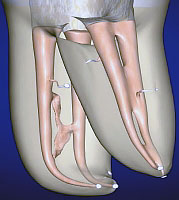 The main etiological factor in the development of the disease is the presence of an infection that penetrates the pulp from the carious cavity. Acute inflammation of the vascular-nerve complex of teeth is sometimes accompanied by the reaction of periodontitis tissues and regional lymph nodes. Toothpache together with pain when touched to the causal place or pressing a finger expressed in the edema of soft tissues of the submandibular region.
The main etiological factor in the development of the disease is the presence of an infection that penetrates the pulp from the carious cavity. Acute inflammation of the vascular-nerve complex of teeth is sometimes accompanied by the reaction of periodontitis tissues and regional lymph nodes. Toothpache together with pain when touched to the causal place or pressing a finger expressed in the edema of soft tissues of the submandibular region.
The main sign of the disease Pulpit of dairy teeth — This is a long-term toothpache, periodically arising without the impact of an external stimulus, more often at night, and amplifying under the influence of various external phenomena — mechanical or temperature exposure.
Therapy of temporary teeth is one of the leading in children's dentistry. The main task of the dentist and parents — Save a dental series of a child to physiological shift and prevent all sorts of complications that can have a detrimental effect on the state of the dental system. In order to prevent negative reactions in temporary dental units, pulpeent and pulpotec preparations are shown. According to numerous observations, there are no changes in color, there are no pain in the process and after treatment.
Pulp after treatment: no longer voltage
With a radiological study of the pulpage after treatment, any destructive changes in bone tissue, pathological resorption or damage to the adventures of a constant dental system. It is known that the pulpita as a phenomenon is widespread, after treatment does not reveal changes in the color of the crown, does not cause pain after a certain time after therapy, but there is a slight amount of complications, especially after the use of devotional methods.
This problem makes specialists look for new ways and methods of dental system therapy with the use of modern technologies and drugs, and patients, in turn, pay special attention to the prevention, both in adults and in children. Full care of the oral cavity under the control of the dentist involves the use of high-quality toothpaste and brushes at least 2 times a day, as well as a dental thread in the leaving of the gums. Early detection and elimination of the causes of the dental system, therapeutic and preventive gymnastics, medicinal and physiotherapy, as well as the use of folk remedies recommended by the doctor at the next preventive inspection, which is necessarily necessary 2 times a year, will save from early removal and dentition of dentition.


